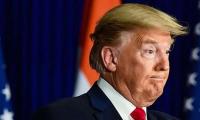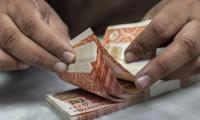LAUNCESTON, Australia: Iron ore's demand-driven price surge last year is increasingly looking like an aberration as supply factors once again start to weaken the price outlook.When spot Asian iron ore prices jumped 81 percent in 2016, the surprise rally was chalked up to stronger Chinese imports and signs that a market that had been oversupplied for several years was back in balance.
China, which buys about two-thirds of seaborne iron ore, certainly did boost imports in 2016, buying more than 1 billion tonnes in a year for the first time, with overseas purchases of the steel-making ingredient rising 7.5 percent.
There has been little let up in the pace this year, with imports from January to May jumping 7.9 percent from the same period in 2016 to 444.6 million tonnes, putting them on track for an annual increase of about 65 million tonnes.
Imports look set to remain robust in June as well, with ship and port data compiled by Thomson Reuters Supply Chain and Commodity Forecasts pointing to arrivals of 93 million tonnes.
This number was filtered to show only vessels that have already discharged cargoes or are underway, and may be revised higher as late cargoes get added. Overall, the picture shows that China's appetite for imported iron ore remains strong, meaning the price decline so far this year isn't driven by weakening demand.
The spot price ended at $56.82 a tonne on Wednesday, down 28 percent from the start of the year and 40 percent from a peak of $94.86 on Feb. 21. Chinese domestic iron ore futures have fared some better, with Dalian Commodity Exchange contracts slipping 8.1 percent so far this year to Wednesday's close of 426 yuan ($62.37) a tonne, and down 33 percent from their Feb. 21 peak.
In contrast, benchmark Chinese steel futures, the Shanghai rebar contract, have gained 15.1 percent since the end of last year to Wednesday's close of 3,060 yuan a tonne.This divergence between Chinese steel and iron ore prices is a marked change from last year, when they rallied in tandem, with rebar gaining 96 percent to spot iron ore's 81 percent.
China's steel market appears relatively robust currently, with output in May rising 1.8 percent from a year earlier to 72.26 million tonnes, just below April's monthly record of 72.78 million tonnes.
This handout photo released by the Iraqi prime minister´s office on April 1, 2023, shows a view of installations at...
P@SHA Chairman Zohaib Khan was the esteemed Chief Guest at Aptech 2023. — X/PASHAORGKARACHI: Muhammad Zohaib Khan,...
PSX marked the listing of the Mahaana Islamic Index Exchange Traded Fund with a gong ceremony on aPRIL 23, 2024. —...
FPCCI Regional Chairman and VP Zaki Aijaz while speaking during a round table discussion on the challenges and...
This representational image shows Gold bars. — AFP/FileKARACHI: Gold prices in the local market fell by Rs7,800 per...
Security personnel walk past the US Federal Reserve building in Washington, DC on Oct 22, 2021. — AFPNew York:...







